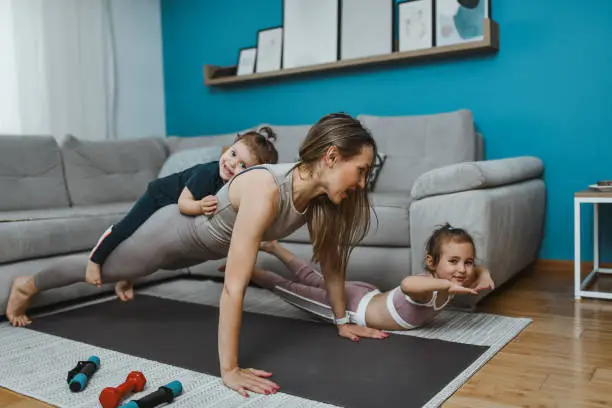Staying active is a cornerstone of good health, but for elderly individuals or those recovering from injuries, traditional workouts can often seem out of reach. Limited mobility, balance issues, or pain can make standing exercises daunting or even unsafe. That’s where chair exercises come in—a safe, accessible, and effective way to keep the body moving, maintain strength, and improve flexibility without putting undue stress on joints or risking falls.
This comprehensive guide will dive deep into the world of chair exercises, why they matter so much for elderly and injured users, and how you can easily incorporate them into daily routines to boost physical and mental wellbeing. Whether you’re a caregiver, family member, or looking for ways to stay active yourself, these tips and routines will empower you to move safely and confidently.
🪑 Why Chair Exercises Are Essential for Elderly and Injured Users
The Importance of Staying Active Regardless of Limitations
It’s no secret that physical activity is crucial for health, but for many seniors or people with injuries, mobility limitations often cause a decrease in overall activity levels. This can lead to muscle atrophy, joint stiffness, reduced balance, and even depression or anxiety. Chair exercises help break this cycle by providing gentle movement that:
- Preserves muscle mass and strength: Maintaining muscle is vital for everyday tasks such as standing, walking, and getting up from a chair.
- Improves joint flexibility: Gentle stretches reduce stiffness and improve range of motion.
- Enhances cardiovascular health: Even seated movement increases heart rate, helping circulation and stamina.
- Reduces risk of falls: Strengthening core and leg muscles enhances balance and stability.
- Supports mental health: Physical activity releases mood-boosting endorphins, improves sleep, and reduces feelings of isolation.
Who Should Consider Chair Exercises?
- Seniors with balance or mobility concerns
- Individuals recovering from surgeries or injuries such as hip or knee replacements
- People with chronic illnesses like arthritis, multiple sclerosis, or osteoporosis
- Anyone advised by a healthcare provider to avoid weight-bearing activities
- Those seeking low-impact options to gradually build fitness
The beauty of chair exercises is their adaptability—you can tailor intensity and complexity to suit individual needs and progress safely at your own pace.
🧘♂️ Types of Chair Exercises and How They Help
Warm-Up Exercises: Preparing Your Body for Movement
Warming up increases blood flow, loosens muscles, and primes the nervous system. Gentle chair-based warm-ups help prevent injury and make the workout more effective.
Try these warm-up exercises:
- Seated Marching: Sit tall and lift your knees alternately as if marching. This improves circulation and warms up your legs and core.
- Shoulder Rolls: Roll your shoulders slowly forward and backward to ease tension and prepare upper body muscles.
- Neck Stretch: Slowly tilt your head from side to side and then forward, holding each position for a few seconds to release neck stiffness.
- Ankle Circles: Lift one foot slightly off the ground and rotate the ankle clockwise and then counterclockwise. This helps with joint mobility and circulation.
Warming up for 5 to 10 minutes primes the body for more active movements.
Strength Training Exercises: Building Muscle Safely
Muscle strength is crucial for independence, from standing up to carrying groceries. Chair exercises can strengthen your muscles using just your bodyweight or light resistance.
Some great strength moves include:
- Seated Leg Extensions: Sit tall, extend one leg straight out, hold for 3-5 seconds, then lower. Repeat 10-15 times per leg. This strengthens your quadriceps, vital for knee health.
- Seated Arm Raises: Raise your arms out to the sides up to shoulder height and lower slowly. Repeat 10-15 times. This strengthens shoulders and upper back.
- Seated Bicep Curls: Use light weights or water bottles and curl your arms toward your shoulders. Repeat 10-15 times to build arm strength.
- Seated Hip Marches: Lift one knee at a time toward your chest while keeping your back straight. This activates hip flexors and core muscles.
- Chair Push-Ups: Place your hands on the armrests of the chair and push your body slightly upward without standing, then lower gently. This works your triceps and chest muscles.
Flexibility and Stretching: Maintaining Mobility and Reducing Stiffness
Stretching keeps muscles flexible, joints lubricated, and reduces aches.
Try these seated stretches:
- Seated Hamstring Stretch: Extend one leg with the heel on the floor and gently lean forward from the hips, reaching toward your toes. Hold for 20-30 seconds, then switch legs.
- Seated Spinal Twist: Place your right hand on the outside of your left knee, twist your torso gently to the left, and hold for 15-20 seconds. Repeat on the other side.
- Wrist and Finger Stretches: Extend your arms forward, spread your fingers wide, then make fists. Repeat 10 times to relieve stiffness, especially for arthritis sufferers.
- Neck Side Stretch: Tilt your head gently toward one shoulder and hold for 15 seconds, then switch. Relieves neck tension.
💪 Sample 30-Minute Chair Exercise Routine
To get the most out of your chair workouts, here’s a sample routine combining warm-up, strength, and flexibility moves. This routine is gentle yet effective and can be repeated 3-5 times per week.
Warm-Up (7 minutes)
- Seated Marching: 2 minutes
- Shoulder Rolls: 1 minute
- Neck Stretches: 1 minute
- Ankle Circles: 1 minute per ankle
- Deep Breathing: 1 minute to calm and focus
Strength Training (15 minutes)
- Seated Leg Extensions: 3 sets of 10-15 reps per leg
- Seated Arm Raises: 3 sets of 10-15 reps
- Seated Bicep Curls (with light weights): 3 sets of 10-15 reps
- Chair Push-Ups: 3 sets of 8-12 reps
- Seated Hip Marches: 2 sets of 15 reps
Flexibility and Cool Down (8 minutes)
- Seated Hamstring Stretch: 2 sets of 20-30 seconds per leg
- Seated Spinal Twist: 2 sets of 15 seconds per side
- Wrist and Finger Stretches: 2 sets of 10 reps
- Neck Side Stretch: 2 sets of 15 seconds per side
- Deep Breathing and Relaxation: 2 minutes
📝 Tips for Safe and Successful Chair Exercise Sessions
Choosing the Right Chair
- Use a sturdy chair with no wheels and a flat seat.
- Chair height should allow your feet to rest flat on the floor with knees bent at about 90 degrees.
- Chairs with armrests help support balance during certain exercises.
Clothing and Environment
- Wear comfortable, loose clothing and supportive, non-slip shoes or socks.
- Exercise in a well-lit, clutter-free space to minimize hazards.
Listening to Your Body
- Start slowly, especially if you’re new to exercising or recovering from injury.
- Stop immediately if you feel pain, dizziness, or shortness of breath.
- Consult your healthcare provider before starting any new exercise routine.
Staying Consistent and Motivated
- Set realistic goals and track progress. Even small improvements count!
- Find a workout buddy, family member, or caregiver to encourage you.
- Celebrate your achievements, no matter how small.
🧓 Why Staying Active is Crucial as You Age or Recover
Physical activity plays a key role in:
- Maintaining independence: Stronger muscles and better balance help with everyday tasks like standing, walking, and climbing stairs.
- Reducing fall risk: Falls are a leading cause of injury in older adults, but strength and balance exercises reduce this risk.
- Managing chronic conditions: Exercise helps control symptoms of arthritis, diabetes, heart disease, and more.
- Enhancing mood and cognitive function: Movement stimulates brain health and can reduce feelings of anxiety and depression.
- Improving quality of life: Staying active supports social engagement, sleep quality, and overall vitality.
❓ FAQs About Chair Exercises for Elderly and Injured Users
Q1: How often should I do chair exercises to see benefits?
Aim for at least 3-5 sessions per week. Consistency is more important than intensity. Even 15-30 minutes per session makes a difference.
Q2: Can chair exercises help me regain strength after surgery?
Yes! They are often recommended in rehab to gently rebuild muscle without stressing healing tissues.
Q3: Are there any risks associated with chair exercises?
Risks are minimal if exercises are performed slowly, with control, and without pushing into pain. Always consult your doctor if unsure.
Q4: Can I increase intensity over time?
Absolutely. You can add light weights, increase repetitions, or slow down movements to challenge your muscles more.
Q5: What if I have severe arthritis or joint pain?
Chair exercises can be adapted to your comfort level. Focus on gentle range-of-motion and stretching exercises. Speak to a physical therapist for personalized advice.



